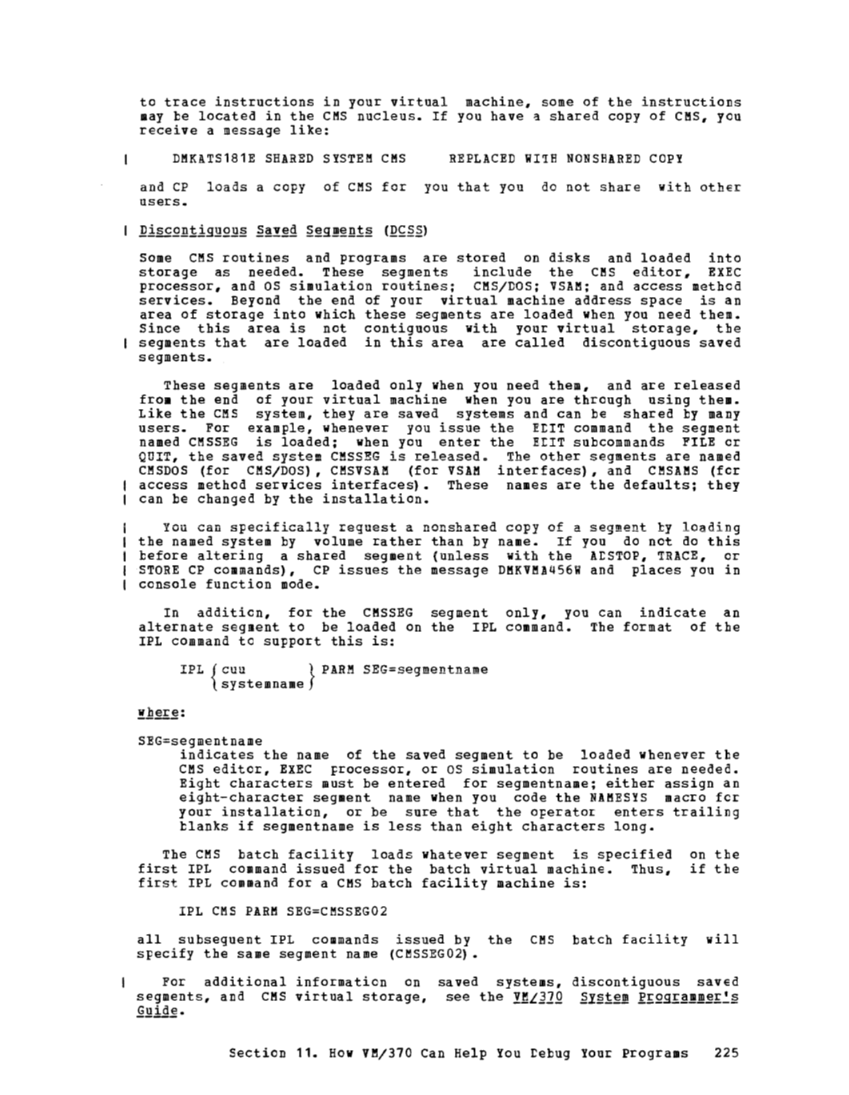Transient
Free storage used by
Low-storage
System Control Blocks,
Pointers, Flags
Figure 19. Simplified
virtual machine
storage size)
is known to
using eMS, you
command to load
same system,
by its saved name,
that is available for many users to share.
share it with other users who have also issued the
can manage system resources more efficiently.
your virtual machine by entering the
cp ipl
address, which in most installations is
this way is ncnshared; it is your own copy, but it is the same system,
functionally, as the saved system
or store information that is contained in shared areas of your virtual
machine. For example, if you have entered the command:
cp trace inst
224 IBM














































































































































































































































































































































































































































































































